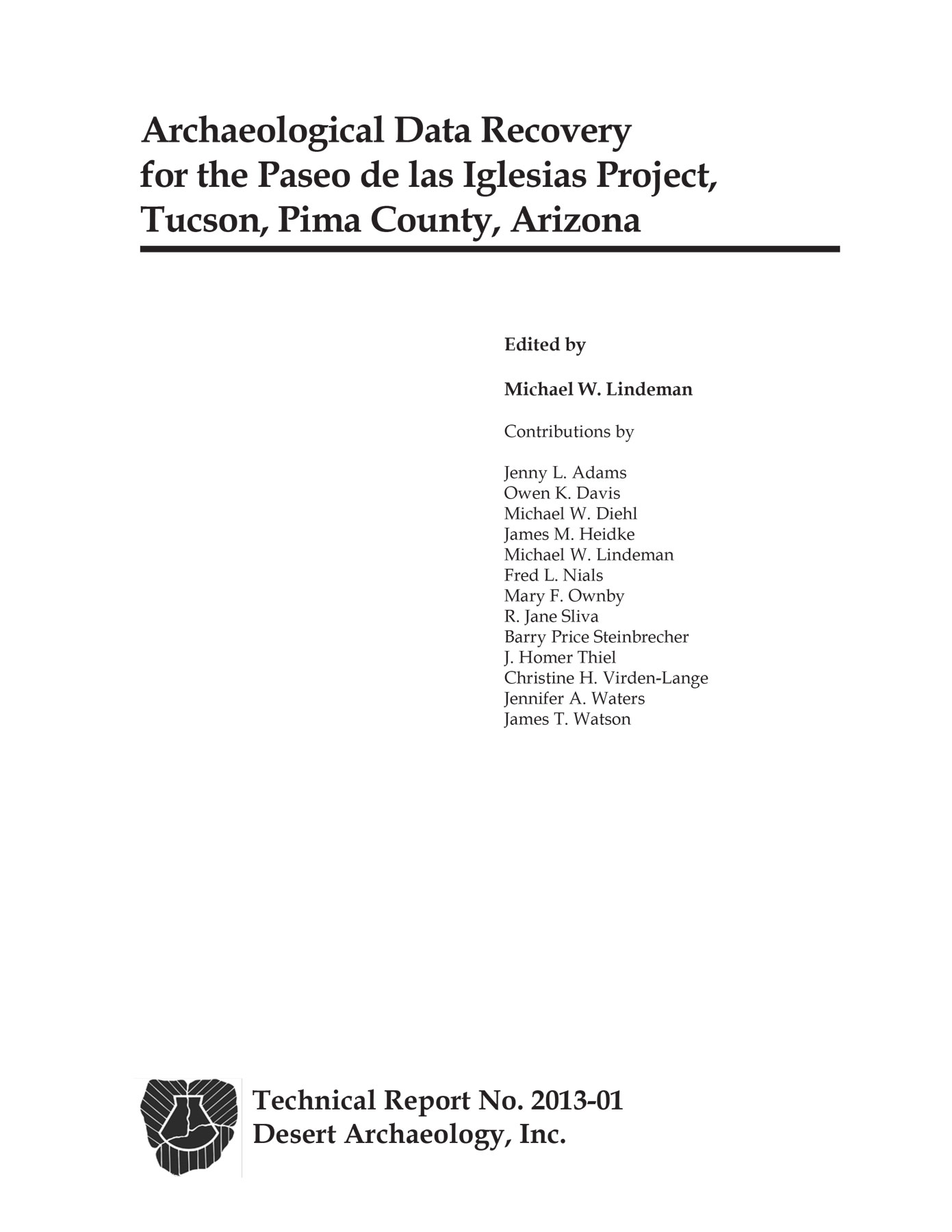Description
Archaeological Data Recovery for the Paseo de las Iglesias Project, Tucson, Pima County, Arizona (TR2013-01) (PDF)
Edited by: Michael W. Lindeman
Contributions by:
Jenny L. Adams
Owen K. Davis
Michael W. Diehl
James M. Heidke
Michael W. Lindeman
Fred L. Nials
Mary F. Ownby
R. Jane Sliva
Barry Price Steinbrecher
ABSTRACT
The Paseo de las Iglesias (Paseo) project provided a unique opportunity to examine the riverine landscape and its role in the lives of millennia of inhabitants of the Tucson Basin, from Early Agricultural period farmers to late Historic era farmers and entrepreneurs. Questions about how people utilized the riverine landscape guided the project research presented here. The Paseo project area is centered on the Santa Cruz River, extending from the banks of the current entrenched channel to the adjacent floodplain on the eastern and western sides of the river. This volume presents the results of archaeological data recovery at nine archaeological sites: the Julian Wash site, AZ BB:13:17 (ASM); AZ BB:13:94 (ASM); AZ BB:13:95 (ASM); AZ BB:13:96 (ASM); AZ BB:13:97 (ASM); the Paseo site, AZ BB:13:111 (ASM); AZ BB:13:539 (ASM); AZ BB:13:832 (ASM); and AZ BB:13:833 (ASM).
The Paseo site—AZ BB:13:111 (ASM)—was formerly known as the Lee’s Mill site. The name change was motivated by two factors. Thiel’s research (Chapter 11, this volume) found the name to be a misnomer with the mill known historically as either Rowlett’s Flour Mill or the Pioneer Mill. With the primary component of the site dating to the Agua Caliente phase, the Lee’s Mill name caused confusion when discussing the site during public outreach efforts, creation of signage along the park trials, and in this volume. The Paseo site will be added to AZSITE as the primary site name.
The largest prehistoric occupation found in the project area was the Agua Caliente phase component at the Paseo site. Compared with other Agua Caliente components in the Tucson Basin, the 26 pithouses uncovered at the Paseo site mark the site as the largest currently recorded in the Tucson Basin. Analysis of the radiocarbon dates places the occupation between A.D. 425 and 540.
